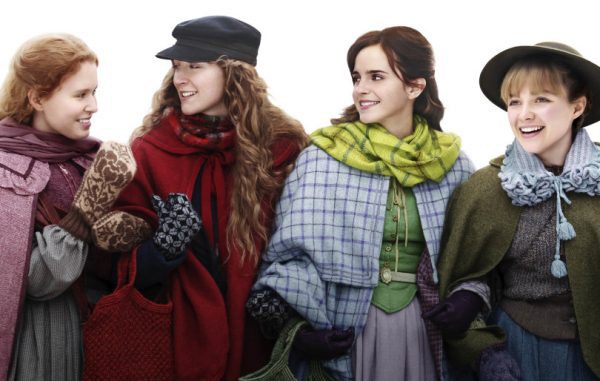Big Fan: A Review of Greta Gerwig’s Little Women, Part 1
Ana Hein // Blog Writer
It’s a classic personality test: are you a Meg, Jo, Beth, or Amy? I have pondered over this question at length ever since I first read Louisa May Alcott’s classic novel, Little Women, back in fourth grade. The book follows the lives of four sisters with conflicting personalities coming of age during and after the Civil War. It’s part Bildungsroman, Christmas story, love story, moral tale, and feminist text all rolled into one incredibly moving package. I instantly fell in love with both it and its characters. I loved its message of supporting women, and how there was no one right way to be a woman. And now, after finally settling the matter of which March sister I am with much satisfaction (since you are all so curious, I’ll tell you; I’m an Amy, and proud of it!), I have a feeling more people are going to be asking themselves this same question with the recent release of Greta Gerwig’s adaptation of the novel.
Little Women has had numerous adaptations since its initial publication in 1868, from a now lost silent movie in 1917, to an opera in 1998, to a Broadway musical starring Sutton Foster in 2005. But of all of these—and I have seen/listened to plenty—being I have to say, I think Gerwig’s adaptation might be my favorite.

Gerwig beautifully adapted the book for the screen. The film is simply gorgeous, from the very first shot of Jo standing center frame in front of her publishers’ door. The colors, sets, costumes, and overall ambience highlight both the themes of the story and the emotions of the characters while still being striking in their own right.
The story is presented out of chronological order, with the opening scene taking place after Jo has left for New York to pursue her writing. The film then cuts back and forth between the adult present, with the sisters separated, and their idyllic childhood in Concord. If one is not familiar with the plot of the novel, this time switching could be a bit confusing, but the film has several visual clues to delineate which timeline a given scene takes place in. All the scenes in the past are shot in a warm, yellow light, making it feel welcoming and nostalgic. Meanwhile, all the scenes in the present are shot with a cooler blue light, emphasizing the harsh realities and darker feelings the girls are facing while apart. Amy’s bangs also serve as a helpful hint, as in the past, she has them, but in the present, she doesn’t. Even though the sequence is out of order, the events themselves are virtually identical to those in the novel. A large portion of the dialogue is lifted straight from the book–the scene where Laurie proposes to Jo is practically word-for-word accurate.

Part of what makes Little Women so enduring is its characters, and I’m happy to say that all of the actors bring to life the distinctive March family and friends. I specifically want to highlight Saoirse Ronan as Jo, and especially Florence Pugh as Amy. Ronan captures the fiery nature of Jo March perfectly, displaying her quick temper but also her exuberance and love. She’s a woman full of feelings and thoughts and is not afraid to express them. There’s this emotional openness to her performance that really grounds the character. Every time she’s on screen, you can tell exactly what she’s thinking and feeling. Pugh has perhaps the most difficult role as she plays a notoriously (and unjustly) disliked character who arguably goes through the most radical character growth. Pugh is able to capture the spirit of Amy March perfectly. She imbues her younger self with enough immaturity to make her a believable child but without making her as annoying as most of her detractors argue she is. This allows Amy’s growth into a more mature and practical woman struggling with love, marriage, duty, and her artistic endeavors all the more striking. Pugh practically plays two different characters but is able to make both versions feel distinctly like Amy. She pulls it off spectacularly, and it’s a good thing too, because Amy gets considerably more focus in the film than in the novel. The romance between Amy and Laurie has always been contentious among fans with many thinking it comes out of nowhere, but the film puts a lot of effort into making their eventual pairing feel like a natural reaction for the characters.
Part 2 of this review will be posted January 21.
